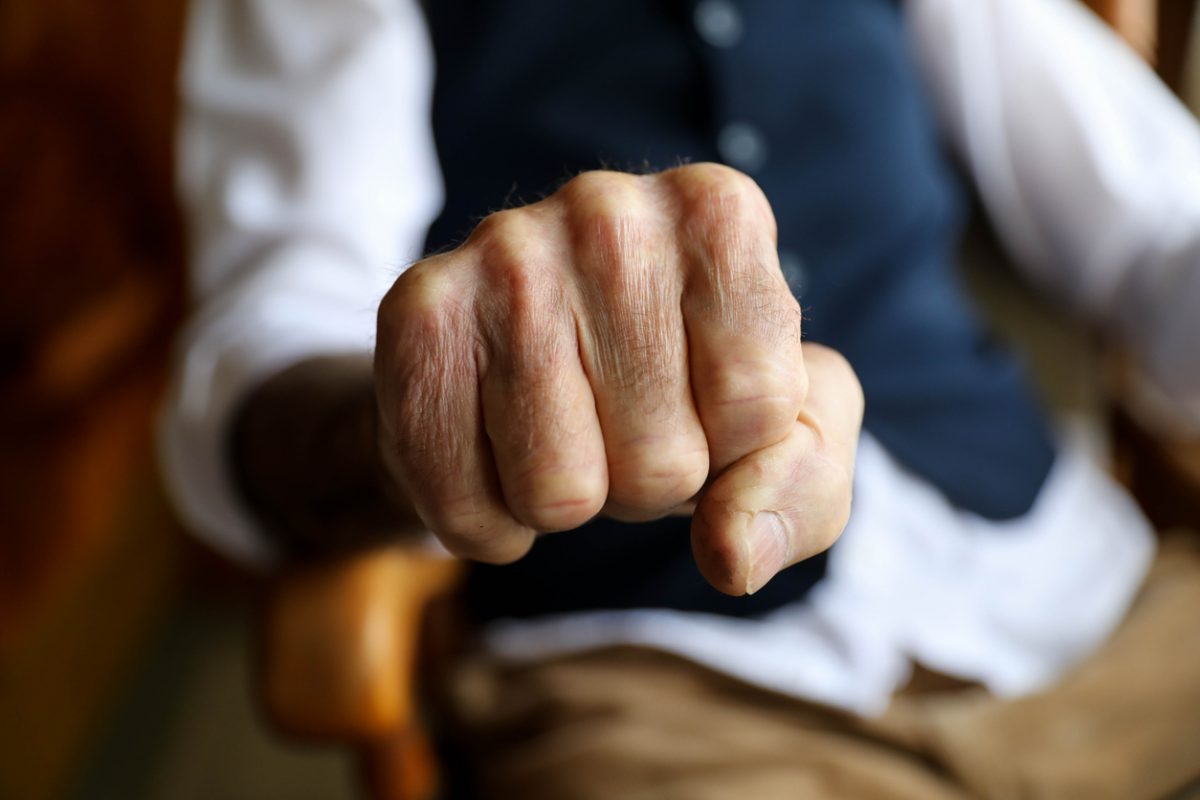Bath Salts-Induced Delirium and Brief Psychotic Episode in an Otherwise Healthy Young Man
To the Editor: Poison centers took 2,237 calls through mid-May 2011 regarding toxic products marketed as bath salts. Bath salts contain methylenedioxypyrovalerone (MDPV), a chemical that is not approved for medical use in the United States.1 We are reporting a case to document that delirium and a reversible brief psychotic episode can be induced by easily available bath salts, which are undetected on routine urine or blood drug screen and thus require special attention in public health and law enforcement.
Case report. Mr A, a 28-year-old white man, was brought to the emergency department in 2011 for investigation of confusion and an altered level of consciousness after recreational ingestion of bath salts (“Lady Bubbles”). The previous night, he had ingested 750 mg of “Lady Bubbles.” The following day, Mr A was found in a confused and disoriented state with both hands soaked in blood. The patient reportedly cut his wrists with a glass, and a broken window was found near the scene. He was taken to the emergency department, where he displayed a fluctuating level of consciousness; disorientation to name, place, and time; marked loosening of associations; and bizarre, agitated, and disorganized behavior. The patient received 1 dose of ziprasidone 20 mg intramuscularly in the emergency department.
Mr A’s vital signs were within normal limits; physical examination was unremarkable except for bilateral superficial lacerations with one 1.5-cm full-thickness laceration on his left forearm and one 3-cm full-thickness laceration on his right forearm. Results of extensive blood work, including complete blood count, electrolytes, and liver and renal function tests, were within normal limits. The urine toxicology screen was negative for cannabis, amphetamines, hallucinogens, benzodiazepines, cocaine, opiates, and 3,4-methylenedioxymethamphetamine. His blood alcohol level was < 0.01%. Computed tomography of the head revealed no abnormalities, and remaining workup of sudden onset of altered mental status showed no abnormal results. Initial psychiatric consultation obtained in the emergency department revealed him to be somnolent, difficult to rouse, uncooperative, and profoundly confused. A diagnosis of hallucinogenic (and possibly bath salts-induced) delirium (DSM-IV criteria) was made.
Mr A had no psychiatric history and was physically healthy. There were no difficulties within the family. His biological father suffered from depression and committed suicide when the patient was 8 years old. The patient was unemployed and was living at his mother’s house. He had also ingested 250 mg of “Lady Bubbles” a couple of days prior to this episode that resulted in increased heart rate, elated mood, and increased socialization. He had experimented with cocaine and heroin on approximately 10 occasions in the past and reported subjective effects of euphoria and increased talkativeness lasting for a few hours, but no other sequelae.
During the first 24 hours of hospitalization, Mr A’s level of consciousness improved; he became more alert and better oriented to time, place, person, and situation. He continued to endorse symptoms of delusional ideation involving misidentification and command auditory hallucinations asking him to “kill himself.” The patient and his psychiatrist agreed to a short-term trial of perphenazine 4 mg twice a day to target psychotic symptoms and then further evaluation after discontinuation of medication. By the third day of hospitalization, his thought disorder improved, his mood was euthymic, and he consistently denied any command auditory hallucinations or delusional ideation. At the time of discharge, the patient reported passing out after taking bath salts with no recollection of events resulting in hospitalization and during the first 24 hours of hospitalization. He was discharged home to the care of his mother; his physicians believed that his improvement had been significant enough that psychiatric admission was not warranted.
Classes of designer drugs like bath salts are intended to have pharmacologic effects similar to those of controlled substances but to be chemically distinct from them, thus avoiding legal control. Bath salts for recreational use are sold at “head shops” and on the Internet with names such as “Zoom” and “White Rush.” These products also have been labeled as “plant food” and “pond water cleaner” and sold in ways to circumvent detection or enforcement. Some products are labeled as “novelty collector’s items,” despite additional, pharmaceutical-like labels that indicate dosage.1 The products are believed to contain MDPV, a chemical that is not approved for medical use in the United States, which is believed to lead to very severe paranoia.1 MDPV is a norepinephrine and dopamine reuptake inhibitor. Bath salts are no longer legal alternatives in the United States, as an at least 1-year-long ban by the Drug Enforcement Administration has gone into effect as of March 1, 2011. Some of the patients presenting to the emergency department with bath salt abuse were found to have mental illness.2 We present a case of reversible brief delirium and psychotic episode following ingestion of bath salts in an otherwise healthy young man. Our case shows dose-dependent effects of MDPV. At lower doses, it causes increased talkativeness and sociability, while at higher doses, it causes a psychotic reaction. Bath salts-related brief psychosis is reversible and can be treated with antipsychotics or benzodiazepines.
In conclusion, physicians should be aware of the increasing availability of bath salts in “special” plant food or pond cleaner—an availability about which potential abusers may already know. Bath salt use should be included in the differential diagnosis of conditions with sudden onset of delirium and brief psychotic symptoms in younger individuals experimenting with illicit substances despite negative toxicology screen. An increased incidence of reversible brief psychotic episodes might be induced by easily available bath salts, which are undetected on routine urine or blood drug screen. This phenomenon requires attention from a public health and law enforcement perspective.
References
1. American Association of Poison Control Centers. US poison centers raise alarm about toxic substance marketed as bath salts; states begin taking action. Alexandria, VA: American Association of Poison Control Centers; May 12, 2011. http://www.aapcc.org/dnn/Portals/0/prrel/may122011bathsalts.pdf. Accessed December 22, 2011.
2. Centers for Disease Control and Prevention. Emergency department visits after use of a drug sold as “bath salts”—Michigan, November 13, 2010-March 31, 2011. http://www.cdc.gov/mmwr/preview/mmwrhtml/mm6019a6.htm?s_cid=mm6019a6_w. Accessed December 7, 2011.
Author affiliations: Carilion Clinic, Psychiatric Residency Program, Virginia Tech Carilion School of Medicine, Roanoke (Drs Sharma, Iskandar, and Ali) and PDU Medical College, Rajkot, India (Dr Shah).
Potential conflicts of interest: None reported.
Funding/support: None reported.
Previous presentation: Psychiatry Grand Rounds; November 2010; Carilion Psychiatric Rehab Center, Roanoke, Virginia.
Published online: March 29, 2012.
Prim Care Companion CNS Disord 2012;14(2):doi:10.4088/PCC.11l01224
© Copyright 2012 Physicians Postgraduate Press, Inc.





